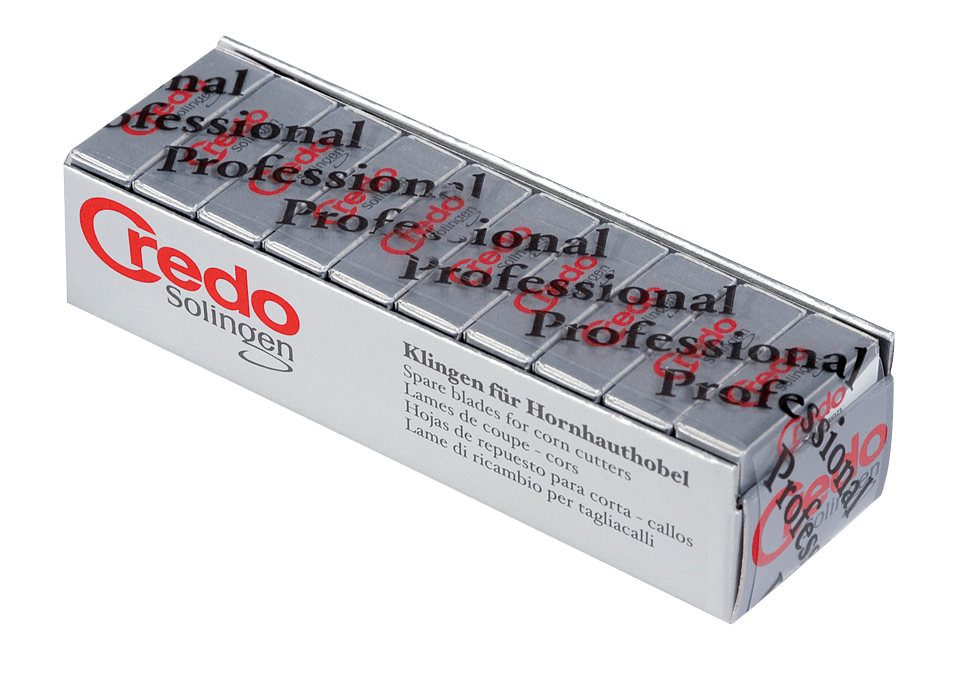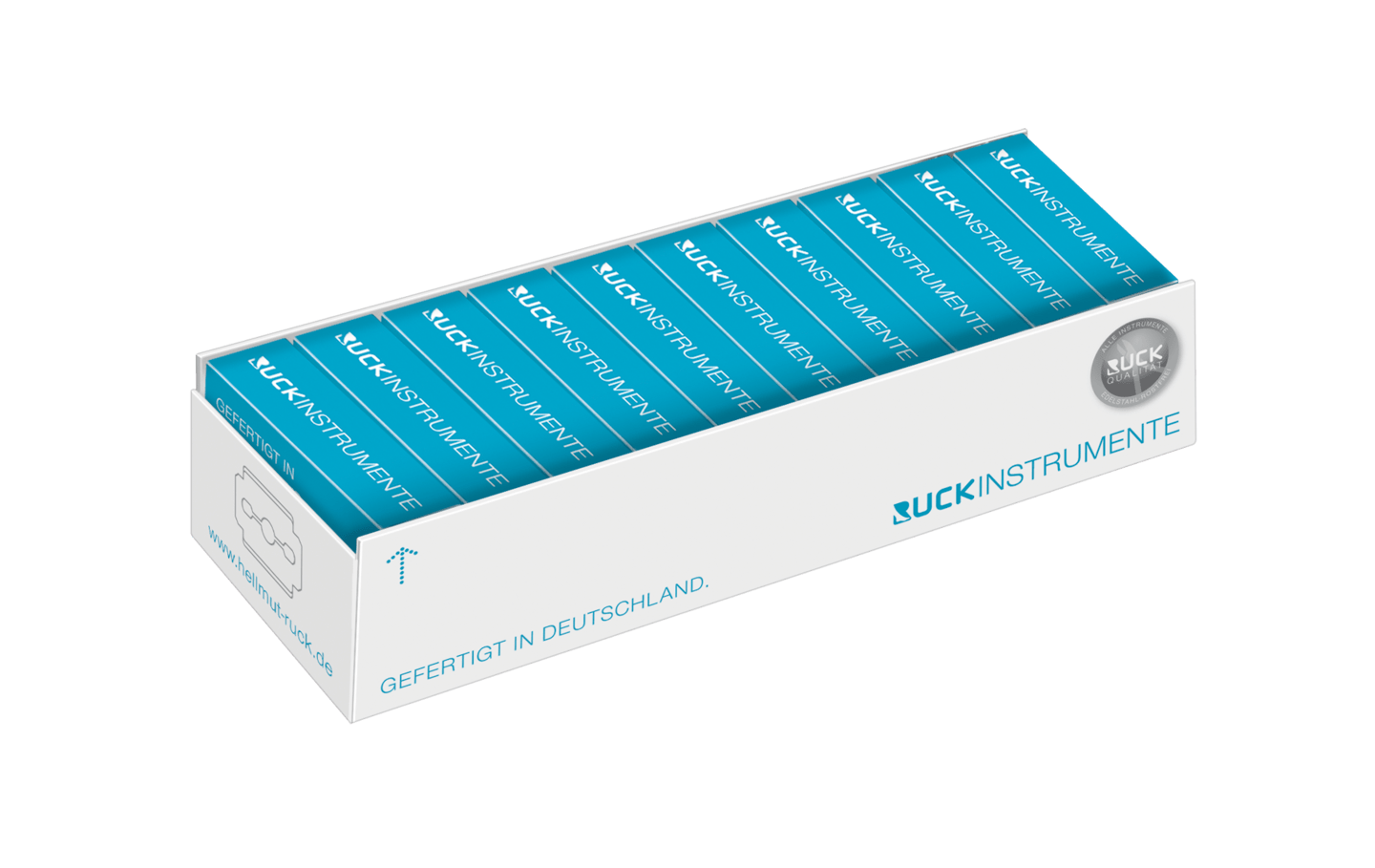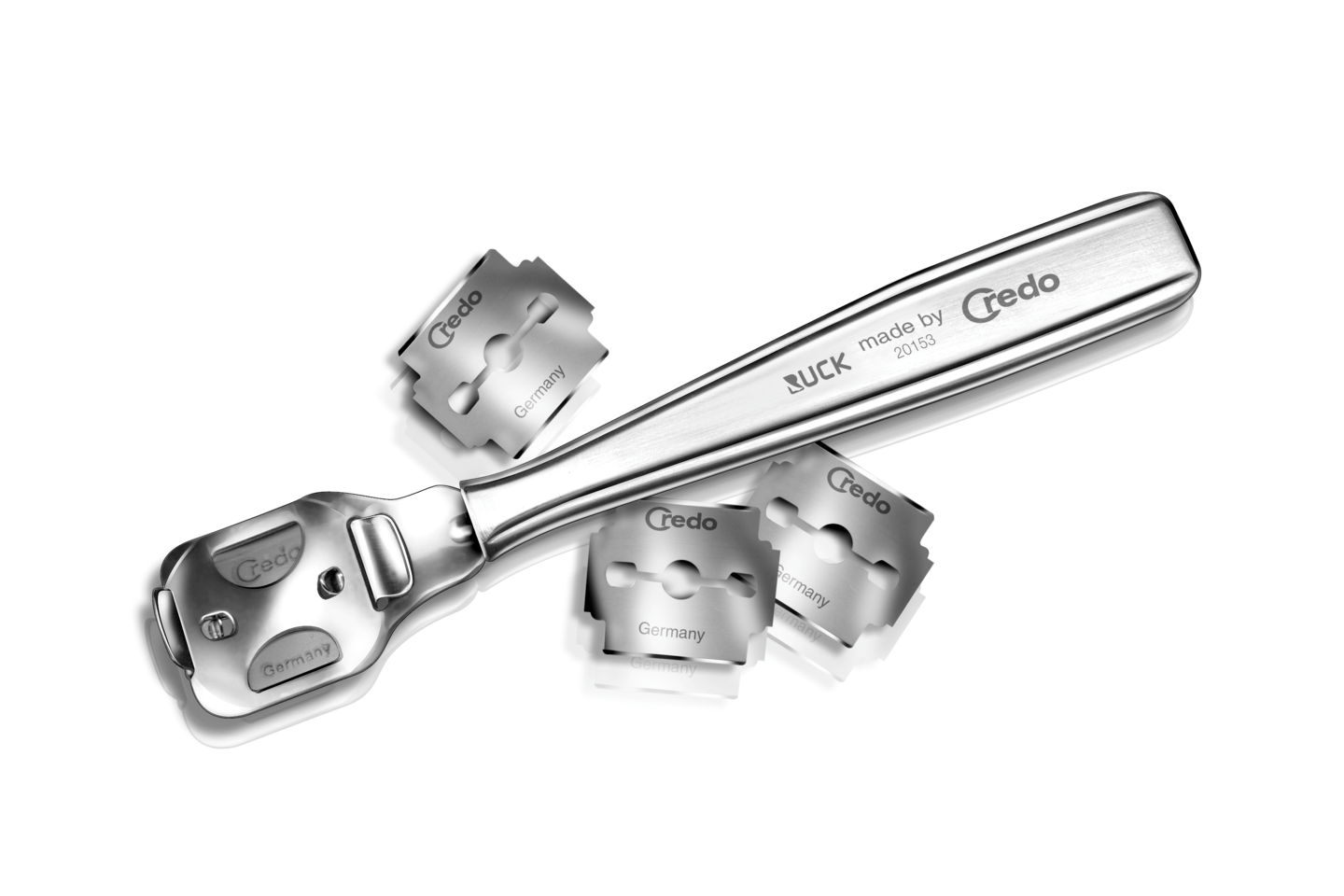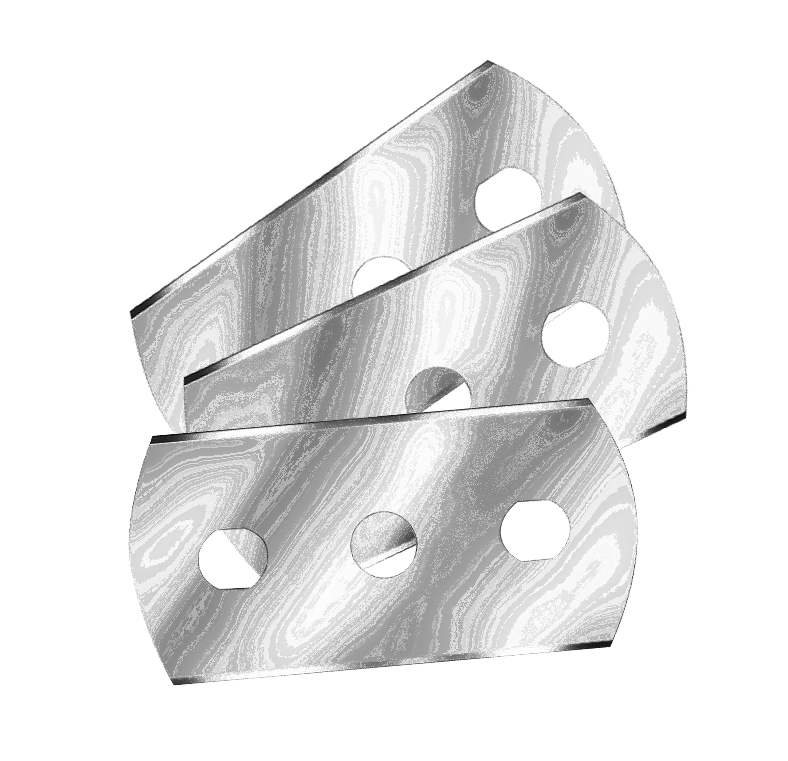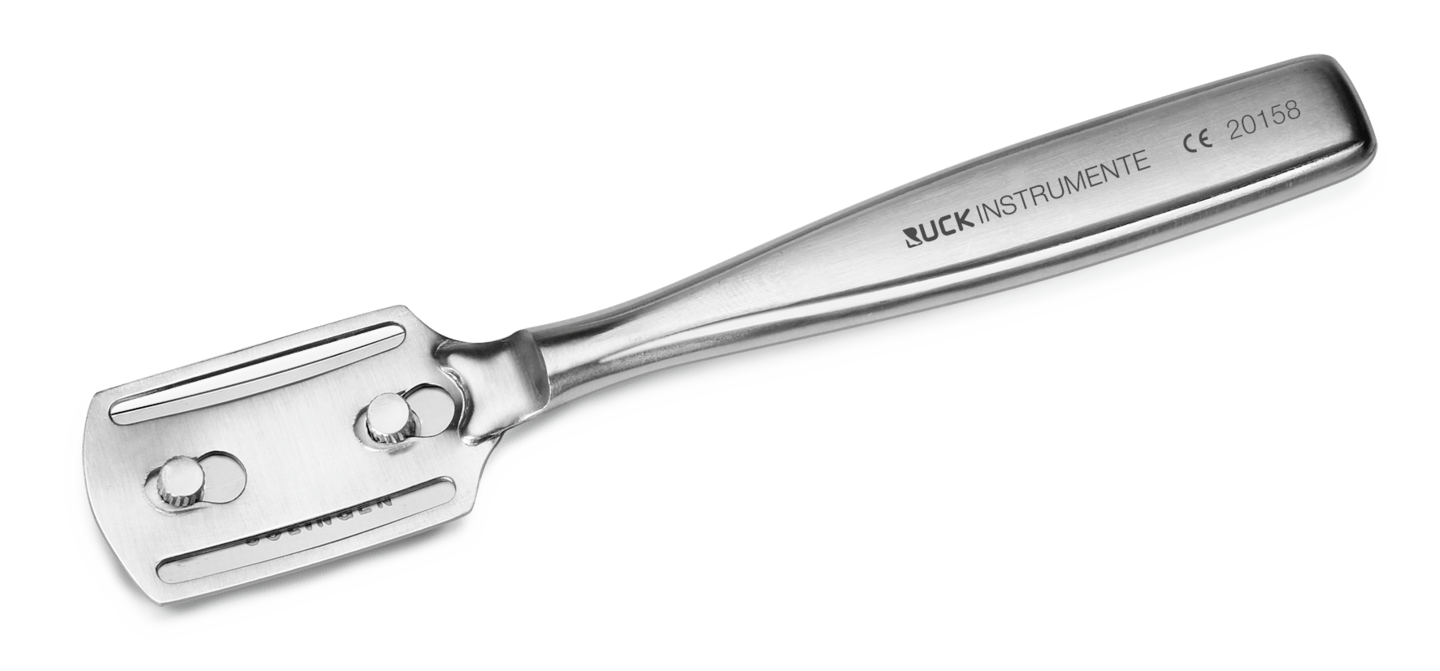Planes

Would you like to be part of the next chapter in our story?
We provide inspiring stories, top tips and informative discussion topics within the area that interests you most: podiatry and all things feet! Subscribe our newsletter & get free delivery!
Subscribe nowPodological planes for different applications at HELLMUT RUCK
Podological planes are among the most important tools used by podiatrists and foot care professionals. They are used to remove callus and other types of callus from the feet. Removing rough, thick or callused skin can not only improve the appearance of the feet, but also their well-being. Excess callus, like a number of other podological problems such as corns, can be painful and even limit the mobility of those affected. Podiatric planes can be used to lift away the underlying causes of such problems with good results.
There are different types of planes that serve different purposes. Longitudinal planes along with transverse planes are the most commonly used. Their application - like that of all podological instruments and tools - requires expert knowledge and a certain amount of experience. For this reason, planes should only be used by trained podiatrists and foot care professionals.
The difference between long and cross planes
Longitudinal planes are used to remove the callus from the feet lengthwise. With you, the long, narrow blade is placed at an angle of about 45 degrees to the skin. The longitudinal plane is suitable for removing calluses from the heels and sides of the feet. Longitudinal planes are extremely useful for treating corns, calluses and other skin conditions that can form on the foot. When using the lengthwise plane, mild pressure is applied, but care should be taken to ensure that the blade does not cut too deeply into the skin to avoid injury.
The transverse plane, on the other hand, is used to remove callus in the transverse direction. It has a wider blade than the longitudinal plane and is placed at an angle of about 90 degrees to the skin.
The transverse plane is extremely suitable for removing calluses from the balls of the feet and under the toes. Calluses, for example on the edges of the sole of the foot, can also be treated effectively with a cross plane. As with all podological instruments that are furnished with blades, a well-dosed pressure is required when using the cross plane. This prevents the blade from penetrating too deeply and damaging healthy skin.
Correct application and cleaning of podological planes
Before any podological treatment, the feet should first be thoroughly cleaned. Before the application of a planing instrument, the skin of the foot is correctly dried. Prior cleaning and disinfection or sterilisation of the treatment tools ensures that no germs or fungi are transferred. The planer is then moved over the calluses with controlled pressure. This way, they can be filed away step by step without damaging the healthy skin. It is important to take care to apply the plane at the right angle and not to apply too much pressure, which can cause injuries. It is also important to use only sharp blades, as planes with blunt blades will compromise successful outcomes and also increase the risk of injury. As the blades are a single-use product, regular blade replacement is therefore of immense importance for the safety and success of podiatric treatment.
The cleaning of podological planing instruments, like that of all nail instruments and tools used for treatment, is of great importance. Adherence to a strict disinfection routine minimises the risk of infection. For this reason, you should always clean and disinfect all instruments used correctly. Instead, immersion baths can be used, in which the instruments are immersed in a special solution for instrument disinfection. Another possible solution is to sterilise your tools. Then you can ensure a safe working environment for you and your patients at all times.





















































